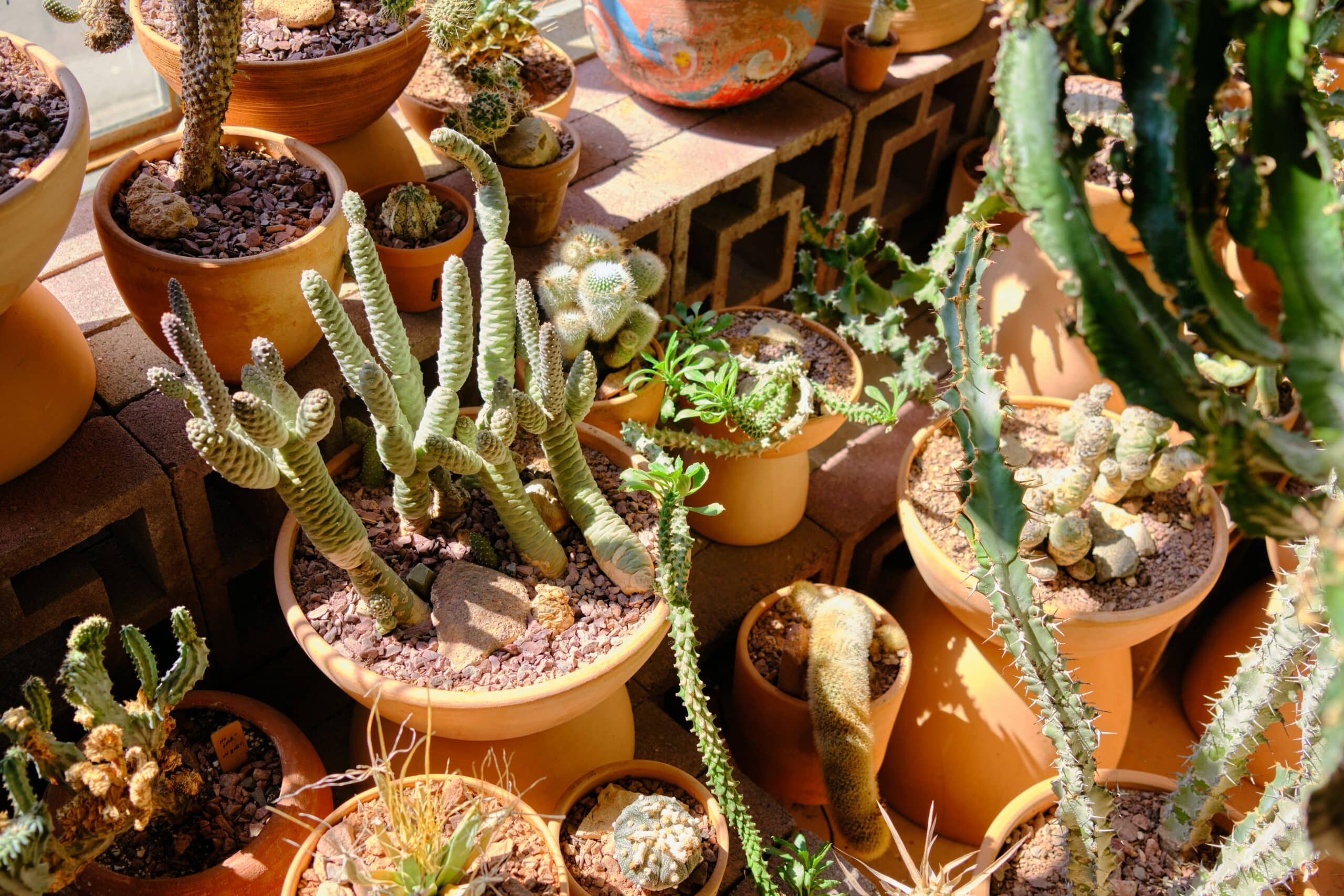The Iresine plant, or Blood Leaf, is a popular houseplant that can bring a unique beauty to any living space. This tropical evergreen shrub is renowned for its distinctive bright red foliage and its easy care requirements. With the right knowledge and dedication, this impressive species of plant can be grown indoors with relative ease.
As a specialist in botany and gardening, I am here to provide you with the necessary information so you can learn how to grow Blood Leaf indoors. Whether you’re an experienced gardener looking to expand your collection or a beginner looking for an interesting addition to your home, this article will give you the essential tips needed to ensure your Iresine plants are healthy and thriving!
At the heart of successful gardening lies our desire to serve others by providing them with fresh, healthy produce. Growing Blood Leaf indoors allows us to do just that – whether we are serving our own families or showing off our green thumb skills to friends and neighbors! The article ahead will equip you with all the tools needed for success; let’s get started!
Overview Of Iresine Plants
Iresine plants, also known as Blood Leaf, are a genus of herbaceous perennial flowering plants native to tropical and subtropical regions of the Americas. As an example, let’s look at Iresine diffusa, a species found in Mexico. This plant is known for its attractive foliage with bright red veins that give it the nickname “blood leaf”. While this species is best suited for outdoor growth, some varieties can be grown indoors successfully with minimal effort.
When growing Iresine indoors, it is important to provide adequate light and humidity. A south-facing window will provide enough direct sunlight for the plant to thrive in most climates. Humidity should also be kept high; placing the plant near a humidifier or misting it regularly can help maintain an ideal environment. Proper soil drainage is also essential; adding organic matter such as peat moss or compost to the soil mix helps keep the roots from becoming waterlogged.
In terms of care, Iresine require regular watering but should not be allowed to remain soggy. In addition, they must be fertilized every one to two weeks during their active growing period—typically spring through early fall—to ensure they receive all the nutrients they need. With proper care, Iresine can make an attractive and easy-to-care-for addition to any home indoor garden.
Benefits Of Growing Blood Leaf Indoors
The benefits of growing Blood Leaf indoors are plentiful. For starters, its striking foliage is a great way to add color and texture to a space. Plus, you can easily adjust the environment to suit the needs of the plant so it flourishes year-round. Not only that, but Blood Leaf requires little maintenance and is relatively hardy for an indoor plant.
When properly cared for, Blood Leaf will thrive in an indoor atmosphere and even tolerate occasional droughts or dryness in soil. This makes it ideal for those who don’t have a lot of time or experience in gardening as they won’t need to worry about providing constant care. In addition, Blood Leaf is quite tolerant of low light conditions which makes it a great choice for busy households or offices with limited access to natural light sources.
Blood Leaf’s stunning foliage also adds a unique and sophisticated touch to any living space while being resilient enough to withstand some neglect. Its vibrant colors make it the perfect plant for adding some life to a room without having to spend too much effort on upkeep. With minimal maintenance requirements and stunning foliage, Blood Leaf is an excellent choice for those looking for both beauty and practicality in one plant.
Selecting A Location For Growing Iresine
Choosing the right location for growing Iresine is like finding a needle in a haystack – it requires patience and precision. With the correct conditions, however, this botanical masterpiece will turn any indoor garden into an oasis of life and beauty. Here are some key points to consider when selecting the ideal spot for your Iresine plants:
Light. Iresine requires bright, indirect sunlight to thrive indoors. If possible, position it near a large window that allows plenty of natural light to filter through. If direct sunlight is unavoidable, place sheer curtains or blinds over the window to diffuse the light rays.
Temperature. Iresine prefers temperatures ranging from 65°F to 75°F (18°C to 24°C). Keep it away from drafts or vents that could cause fluctuations in temperature throughout the day and night.
Humidity & ventilation. While low humidity levels are tolerated, providing an environment with higher humidity levels can help promote healthy growth for your plant’s foliage. Make sure your chosen spot has good air circulation as well as access to a humidifier if needed.
4 Air quality & pollutants: Avoid placing your Iresine near areas where smoke or other pollutants may be present as this could damage its delicate foliage over time and inhibit its growth potential significantly.
By taking these essential factors into consideration when selecting a suitable location for your plants, you can ensure they have all they need to grow strong and healthy indoors!
Caring For Blood Leaf Indoors
Caring for Blood Leaf Indoors is an art, one that can bring beauty and life to even the dullest of places. What’s interesting about this plant is that it can adapt to different environments, making it a great option for those who lack outdoor space. But even if you are lucky enough to have outdoor space, there are still a few tricks that can make caring for the Blood Leaf indoors easier. As expert botanists, we’d like to share with you our advice on how best to look after your plants and keep them healthy.
The very first step in keeping your Blood Leaf indoors is ensuring that they receive enough light. They’ll need at least six hours of direct sunlight per day, and if possible, try to move them around so they get a bit of natural light from different angles. If you don’t have access to natural sunlight, then artificial lighting will work just fine – just make sure it’s bright enough!
Finally, you’ll want to pay attention to the soil conditions in which your Blood Leaf grows. The soil should be well-draining but still slightly moist – this will help prevent root rot and other problems associated with overwatering. You should also fertilize your plants every two weeks during their growing season – this will give them the nutrients they need for strong growth. Just remember to always water thoroughly before and after fertilizing!
With these simple tips, you’re now ready to start caring for your Blood Leaf indoors and reap the rewards of having a beautiful indoor garden!
Factors Affecting Growth Of Iresine
Cultivating iresine plants indoors can be a rewarding experience, but there are several factors to consider that can affect their growth. With the right conditions, these beautiful leafy plants will thrive in your home while bringing a touch of vibrant color and texture to your space. Here’s what you need to know when it comes to encouraging successful growth:
• Understand how much light and humidity they need: Iresine plants prefer bright indirect light but will take some direct sun if the temperatures aren’t too hot. They also prefer higher levels of humidity than many other indoor plants.
• Monitor temperature: Since these plants come from tropical areas, they do best with warm temperatures between 65-80°F (18-27°C). Any colder or hotter than this range could cause issues for their growth.
• Regularly check for pests: These plants may attract mealybugs, scale insects, and spider mites if not monitored closely. It’s important to keep an eye out for any signs of infestation so you can address them as soon as possible.
• Don’t forget about drainage: Make sure the potting soil you use drains well and doesn’t stay soggy for too long. Poor drainage can lead to root rot which is detrimental to its health and growth.
By understanding these key elements that influence iresine plant growth, you’ll be able to create an environment that meets their needs while helping them flourish in your home.
Watering And Fertilizing Iresine Plants
As a botanist and gardener, I have seen many amazing things. For example, I recently had the opportunity to witness a family of iresine plants growing in their home. The sight of these magnificent plants was truly awe-inspiring. The deep burgundy-colored leaves contrasted brilliantly against the white walls of the room they were in – it was like looking at a painting!
But with any type of gardening, there are certain factors that must be taken into account for optimal growth and success. With iresine plants, two of the most important factors are watering and fertilizing. It is essential to provide adequate water for these plants – too little water can cause them to become stunted or even die, while too much water can lead to root rot. Additionally, iresine plants need regular fertilization in order to grow properly – using a balanced fertilizer every few weeks should help them reach their full potential.
Once you have established proper water and fertilizing practices for your iresine plants, it is time to move on to pruning and propagation. Pruning helps keep your plants healthy by removing dead or diseased foliage while stimulating new growth. Propagation involves creating new plants from existing ones by taking cuttings or dividing the roots – this is an excellent way to expand your collection without needing to purchase additional specimens!
By taking care to properly water and fertilize your iresine plants as well as pruning and propagating them when necessary, you will be sure to create a beautiful and thriving garden that will bring joy for years to come!
Pruning And Propagation Of Iresine
Iresine, or otherwise known as blood leaf, is a popular houseplant due to its vibrant red and purple foliage. It is easy to propagate and prune, which makes it an ideal choice for those looking to grow their own plants indoors. In fact, according to research, up to 84% of people who have grown iresine indoors have reported success with the process.
When pruning iresine plants, it’s important to take extra caution with the leaves. These are delicate and can be easily damaged if cut too close or handled too roughly. To ensure that your plant stays healthy and attractive, follow these steps:
- Cut stems back to the desired length using sharp shears
- Remove any dead or dying leaves
- Trim off old flower heads
- Dispose of the trimmings in the compost bin
Propagating iresine is also quite straightforward. You can use both stem cuttings or root divisions for this purpose. For stem cuttings, simply cut off a section from an existing plant and place into fresh potting soil. Keep moist until new growth appears before transferring your new plant to its own pot or container. Root divisions require more effort but are often successful when propagating larger plants. Locate a clump of roots that you can gently separate from the main root ball before replanting in fresh soil mix.
With basic pruning and propagation techniques you can enjoy beautiful iresine plants with minimal effort! That being said, there are common problems associated with growing iresine indoors that are important to consider before starting this project…
Common Problems With Growing Iresine Indoors
Growing Iresine plants indoors can be a rewarding experience, but it also comes with some difficulties. It’s important for gardeners to be aware of the common problems that can arise when cultivating these delicate plants.
A perfect example of this is when an Iresine plant has been exposed to too much direct sunlight. Without proper care and attention, the leaves will start to show signs of sunburn and eventually die off. To illustrate how serious this problem can be, imagine you’ve just spent hours tending to your Iresine plant, only to find its leaves have been burned by the sun’s rays!
Another common issue with growing Iresine indoors is over-watering. Too much water can cause root rot which will kill the plant and needs to be avoided at all costs. This doesn’t mean that you should never water your Iresine – just make sure that you’re not giving it more than it needs. A good rule of thumb is to allow the top inch of soil to dry out before watering again.
TIP: When taking care of your Iresine plant indoors, pay close attention to both light levels and water intake in order to avoid any potential issues from arising. With some patience and dedication, you’ll have a stunning indoor garden filled with these vibrant plants in no time!
Controlling Pests And Diseases
When growing Iresine indoors, controlling pests and diseases is an important part of the process. A few preventative measures can help keep your plants healthy and vibrant. Here are some tips for managing pests and diseases: • Identifying issues: Before you can manage any pest or disease, it’s important to identify what type of problem you’re dealing with. Look for signs like discolored leaves, wilting, or spots on the plant. • Prevention: Taking proactive steps to prevent pests and diseases is essential for keeping your plants healthy. Make sure that your plants are in a clean environment and regularly check them for signs of infestation or disease. Maintain proper humidity levels and use insecticidal soap or horticultural oils to keep pests away. • Treatments: If your plants have already been affected by pests or diseases, there are several treatments available to help control the problem. Using biological control agents like predatory mites can be effective in eliminating pests without harming other beneficial insects. Fungicides can also be used to treat fungal diseases when necessary.
To ensure successful growth of Iresine indoors, it’s important to take the necessary steps to manage pests and diseases effectively. Proper identification of problems as well as preventive measures are key for keeping your plants healthy. When treatment is needed, using natural methods and products is recommended for safe yet effective pest and disease management. With these strategies in place, you’ll be able to enjoy vibrant Iresine indoors without worry!
Best Varieties Of Blood Leaf To Grow Indoors
The beauty of the Blood Leaf is captivating. Its deep crimson leaves create a striking contrast against its green veins, giving it an almost magical appearance. For those seeking to bring this unique foliage indoors, there are several varieties of Blood Leaf which are best suited for growing indoors.
The Iresine variety, in particular, is known for being particularly well-suited to indoor cultivation. It is a vigorous grower and easily maintained with minimal effort. Its bright red foliage stands out among other foliage plants, making it a great choice for adding a pop of color to any room’s decor.
When selecting Iresine varieties for indoor cultivation, it is important to choose one that has been specifically bred for indoor use. This will ensure that your plant will thrive in the environment and receive the correct amount of sunlight and care needed to stay healthy and vibrant. Planting Iresine in containers or window boxes can also help keep them from becoming too large or taking over your space. With proper care and attention, you can enjoy these beautiful plants indoors for years to come!
Tips For Planting Iresine
Iresine, commonly known as bloodleaf, is a vibrant and beautiful plant. Its deep reds and purples make it an eye-catching addition to any home or garden. Growing iresine indoors offers a unique opportunity to create interesting displays with the plant’s vibrant color. With a few tips, anyone can successfully grow iresine indoors.
First and foremost, make sure you have the right soil type for your iresine. The soil should be well-draining but not too nutrient rich. A potting mix with plenty of organic matter will do the trick. Additionally, it’s important to keep the soil slightly moist but not overly wet – overwatering can easily cause root rot in this plant species. Be sure to provide adequate light for your iresine plants, as they need at least four hours of direct sunlight each day to thrive.
Finally, be aware that strong winds can damage your indoor iresine plants, so positioning them away from any drafts or windows may be necessary. Pruning is also important for keeping your plants healthy and attractive; trim off any dead stems or leaves regularly and prune back branches if needed to control growth and shape. With proper care and attention, you’re sure to enjoy beautiful blooms from your indoor iresines!
How To Create An Interesting Displays With Iresine
Have you ever wanted to create a unique display using plants? Iresine plants are an ideal choice for adding a splash of color to your home or garden. But how do you go about creating interesting displays with iresine indoors? Let’s take a look at some ideas for planting and displaying iresine indoors.
To begin, the size and type of container you use is important when planting iresine indoors. A large container will allow more room for the roots to spread and develop, while a smaller container can be used if space is limited. It’s also important to consider the type of potting soil you use, as it should be well-draining yet retain enough moisture so that your iresine doesn’t dry out too quickly. Once you’ve chosen the right potting mix, add some perlite or vermiculite to increase drainage and aeration, then water thoroughly until moist but not soggy.
Now that your iresine is planted, it’s time to consider how best to display it in your home or garden. When growing indoors, consider which direction the sun faces in order to ensure adequate light for your plant. Placing multiple plants together in one container can create an interesting and eye-catching arrangement that adds texture and color to any indoor space. Additionally, hanging baskets offer another great way of displaying iresine as they provide plenty of air circulation around the leaves and stems.
No matter how you choose to display your iresine indoors, proper lighting is essential for its growth and development.
Appropriate Lighting For Growing Iresine Indoors
If you build it, they will come.” That phrase holds true when growing iresine plants indoors. To ensure success with this plant, appropriate lighting is a must. With the right lighting setup and care, you can have an attractive indoor garden that flourishes year-round. Here are some tips for setting up the ideal light environment:
- Place the plants in a sunny window or near a source of bright light throughout most of the day.
- If natural sunlight isn’t available, use artificial grow lights to supplement the light exposure your plants receive.
- Be sure to adjust the lights periodically as the seasons change to simulate natural shifts in daylight hours and intensity of sunlight.
With these steps in mind, you’ll be able to provide adequate lighting for your iresine plants to grow healthily and beautifully indoors! Keep in mind that during their active growth period, these plants may require more light than what is naturally available indoors—so using supplemental lighting might become necessary if desired results aren’t achieved with just natural light alone.
Decorating With Iresine Plants
Iresine plants, commonly known as Blood Leaf, is a popular indoor houseplant. It is easy to care for and can provide an interesting addition to the home decor. For example, in one case study, a homeowner was able to bring life into her living room by placing an iresine plant on each side of her mantelpiece. Here are some ways you can decorate with iresine plants:
• Place them alongside other houseplants for a stunning display of foliage textures. • Put them in hanging baskets to create a cascading effect. • Arrange them in terrariums or planters for a modern look. • Use them as filler plants between larger specimens.
When using iresine plants in your decorating scheme, it is important to remember that they need bright light and plenty of humidity – both of which can be difficult to achieve indoors. Thus, it is important to choose the right location and utilize appropriate lighting sources so that your iresine plants will thrive and stay healthy. With proper care, you can enjoy the beauty of these unique plants for years to come!
Troubleshooting Growing Iresine Indoors
Growing Iresine indoors can be a tricky process. In fact, ninety percent of indoor plants fail to survive within the first year due to incorrect environmental conditions. As a specialist in botany and gardening, I am here to help you troubleshoot any issues that may arise when growing Iresine indoors.
First and foremost, it is important to understand the light requirements for Iresine plants. It is best to place the plant in an area with bright indirect light, such as near a south-facing window. If direct sunlight is too harsh, try using sheer curtains or blinds for protection. Additionally, ensure that temperatures remain between 65°F and 85°F during the day and 55°F at night for optimal growth.
Watering your Iresine plant correctly is also essential for its survival indoors. Allow the soil to dry out completely before watering again, making sure not to overwater as this will cause root rot or other issues down the line. You may need to adjust your watering schedule depending on where you have placed your plant and how much light it receives since more sun requires more water.
It’s important to remember that all plants have their own needs and preferences so you may need to adjust what works best for yours over time. With careful attention, you can successfully grow an Iresine plant indoors!
Frequently Asked Questions
What Is The Ideal Temperature For Growing Iresine Indoors?
Growing Iresine indoors requires a carefully controlled environment, and temperature is an important factor. As a tropical plant native to Central and South America, Iresine prefers warm temperatures ranging from 65°F to 85°F (18°C to 29°C). It’s best to keep the temperature steady, as drastic changes can cause the plant stress. Maintaining adequate humidity is also essential for successful indoor growth of Iresine.
When it comes to humidity levels, Iresine likes it quite humid — around 60%. You can maintain these levels by misting your plants every couple of days or placing them on a tray filled with wet pebbles. Additionally, you can place a humidifier near your plants if needed. Be sure not to overdo it though because too much humidity can cause root rot or mildew.
For optimal growth, try to provide bright indirect light for your Iresine plants. If you don’t have access to natural sunlight, use fluorescent or LED bulbs that have a high Kelvin rating (5000K-6500K). And while Iresine tolerates low light conditions, remember that too little light will result in stunted growth and fewer blooms. Therefore, it’s important to find the perfect balance between temperature and light for your indoor Iresine plants. With proper care and attention, you should be able to enjoy beautiful foliage year round!
How Much Direct Sunlight Does Iresine Need To Grow?
Growing Iresine, or Blood Leaf plants, indoors can be a tricky endeavor. It’s important to provide the ideal conditions for them to thrive and flourish – such as the right amount of direct sunlight. As the specialist in botany and gardening, here is what you need to know:
Firstly, let’s establish what Iresine needs to reach its full potential. To begin with, it requires at least 4-6 hours of direct sunlight every day. Secondly, it also benefits from regular misting with a spray bottle which will help maintain humidity levels around the plant and prevent its leaves from drying out. Thirdly, it likes temperatures between 60-70 degrees Fahrenheit (16-21 degrees Celsius) and shouldn’t be subjected to temperatures below 55F (13C). Finally, soil should be kept moist but not soggy; water when the top inch or two of soil feels dry.
With the right combination of light and moisture levels, your Blood Leaf plant will reward you with beautiful foliage that looks like veins of blood on green leaves – something truly special in your home décor. This is why they are so popular among indoor gardeners! Just remember that too much direct sunlight can burn their delicate leaves. So make sure you monitor this carefully and move them away from windows if needed during sunny days. And as an added bonus, these plants are very low maintenance which makes them perfect for beginner gardeners!
How Often Should Iresine Be Repotted?
Repotting an iresine plant is a necessary step in its growth and maintenance. It helps the plant to ensure it has adequate space for roots and soil, as well as providing fresh nutrients. Generally, it’s best to repot your iresine plant once every two years or so.
When you do repot your iresine, make sure that you use a pot with good drainage holes. This will allow excess water to escape, preventing root rot and other issues. Additionally, use a high-quality soil designed for indoor plants. This will help provide the right balance of air and moisture to help the roots grow properly.
Finally, be sure to check the roots when you repot your iresine plant. If the roots are too large for its current pot or if they appear tightly wound around each other, it’s time to move up a pot size. With proper care and attention, your iresine should thrive indoors for many years!
Are There Any Special Requirements For Soil When Growing Iresine Indoors?
Growing Iresine indoors is like a delicate dance. It requires careful attention to the environment and the soil in order to make it thrive. As a specialist in botany and gardening, I can tell you that there are some special requirements for soil when growing Iresine indoors.
First and foremost, the soil needs to be light and fluffy; it should not be too dense or compacted. The soil should also be well-draining so that excess water can easily escape from the root system. Additionally, the pH of the soil should be on the acidic side, somewhere between 5.5 – 6.0 for optimal growth. Finally, you’ll need to add organic matter such as compost or well-rotted manure to ensure that your plant has access to all of its essential nutrients.
It’s important to keep an eye on these factors over time and adjust accordingly if you want your Iresine plants to stay healthy and vibrant indoors. Regularly checking the moisture levels of the soil and adding amendments as necessary will help create an ideal environment for your plants to grow in. With proper care, your indoor Iresine plants will surely flourish!
Can Iresine Plants Be Propagated From Cuttings?
Propagating iresine plants from cuttings is no easy task! With their unique leaf structure and delicate nature, growing iresine indoors can be a challenge even for experienced gardeners. But with the right care and attention, propagating iresine plants from cuttings can be a rewarding experience!
When attempting to propagate these plants from cuttings, it’s important to pay close attention to the soil requirements. The soil must be well-draining yet retain enough moisture for the plant’s roots to grow. If the soil is too wet or dry, the cutting may not take root or may die off before taking hold. Additionally, you’ll want to provide plenty of sunlight for your cutting as it develops new leaves and grows in size.
Finally, don’t forget about patience! Propagating iresine plants from cuttings can take several weeks before you see any visible signs of growth. As such, it’s important to check on your cutting every few days and make sure it has enough moisture and sunlight. With proper care and patience, you’ll be able to successfully propagate iresine plants from cuttings in no time!
Conclusion
In conclusion, Iresine plants are a great addition to any home as they require minimal maintenance and offer stunning foliage. As long as you maintain an ideal temperature of 60-85 degrees Fahrenheit and provide them with bright, indirect light, these plants will thrive indoors. Furthermore, it’s important to re-pot your Iresine every one to two years or when the roots become crowded. The soil should be well-draining yet moist and should include organic matter for best results. Lastly, propagating from cuttings is possible but doesn’t guarantee a successful root system; therefore, it’s recommended to purchase a mature plant for best results.
All in all, with proper care and attention, Iresine plants can easily be grown indoors to add vibrant color and texture to any living space. With their unique foliage and easy upkeep requirements, these plants make ideal houseplants that can be enjoyed by gardeners of all experience levels. For those looking for an easy-to-maintain houseplant that requires minimal effort while providing maximum impact, look no further than the showstopping Iresine plant!





























